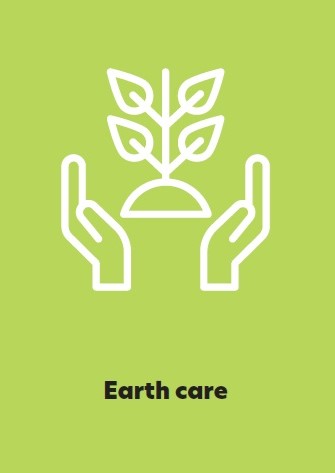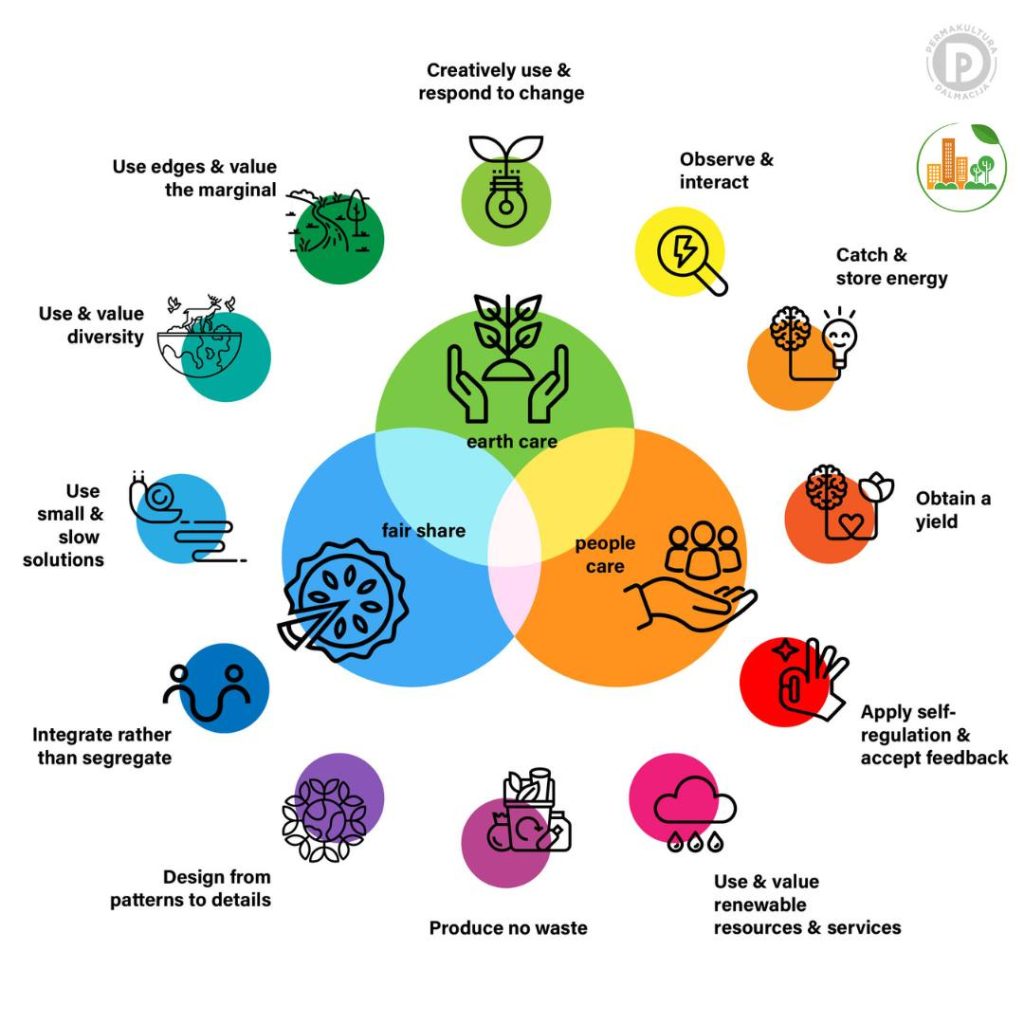Duration: 2 sessions of 45 minutes
Introduction to permaculture involves learning about the benefits of using permaculture methods and approaches to analyze and design various physical and social environments. This lesson serves as a foundation for other lessons within this program.
Permaculture emerged as a response to the social and ecological crises brought about by industrial food production and the unsustainable exploitation of limited resources for the global economy. Initially conceived as “permanent agriculture,” it evolved into a holistic approach for analyzing social reality and providing systemic solutions to observed problems. As a result, the name was shortened to “permaculture” to better reflect its universality.
Permaculture, as a design approach, forms the basis for developing more efficient systems that conserve energy, time, money, and resources. It involves creatively utilizing readily available resources to build soil, improve housing solutions, enhance community relations, increase harvests, and enrich the environment. The design integrates both traditional and contemporary knowledge and skills, shaping living spaces to mimic natural processes. Permaculture’s applications are diverse, covering individual and communal spaces, properties, organizations, neighborhoods, and workplaces.
Since its emergence, practitioners have explored new ways and areas of application, developing new techniques and tools. Permaculture can be applied across different climates, social and political contexts, and natural and social conditions. Ethical principles such as “care for the earth, concern for people, and fair distribution of resources” provide the ethical backdrop for assessing practices and actions, ensuring that design principles and tools are tailored to and respect the diverse contexts in which they are applied.



David Holmgren identified 12 principles of permaculture design. These principles guide the design process to ensure that needs are met while respecting both natural and social circumstances. The goal is to achieve results that meet our needs without disregarding the needs of others within the systems we design.

Getting to know the term “permaculture” involves understanding the context in which it was created and the approach it takes to address social and environmental challenges.
1. Presentation:
2. Group work:
Divide the students into four groups and give each group three cards, each containing one permaculture principle
Each group should choose one or more examples presented during the presentation, relevant to the group of students, to recognize and explain how each principle was applied to meet a specific need or solve a problem
Groups will discuss and present their conclusions, along with examples of alternative solutions or applications in different situations, comparing permaculture ethics dichotomies such as personal/social influence, local/global action, and private/public good
You can use cards featuring symbols of permaculture ethics and design principles to assign tasks listed in the lesson to individuals and groups of students. Each card contains an illustrated symbol and the name of the principle, serving as a reminder and incentive for students to recognize the application of a particular principle in their actions or in social contexts presented in the lesson. Moreover, the cards can be used for recording questions and insights reached during the lesson. They can be distributed in a targeted manner or randomly drawn to achieve the effect of uncertainty. In lower grades, they can be used as a memorization game, including clarifications of discovered principles and connections with examples. You can design your own way of using these cards.